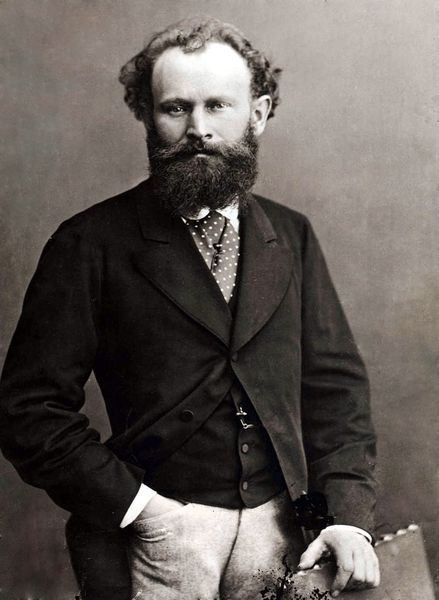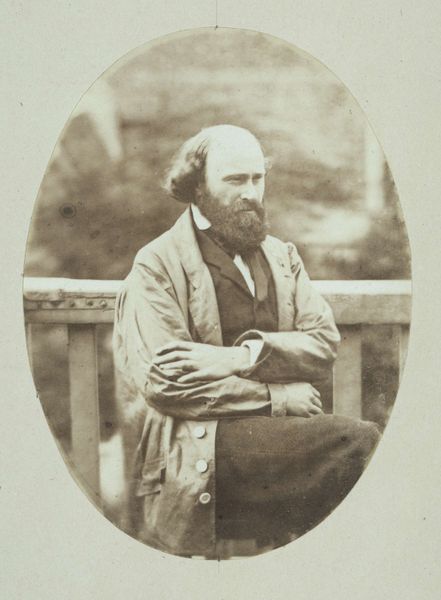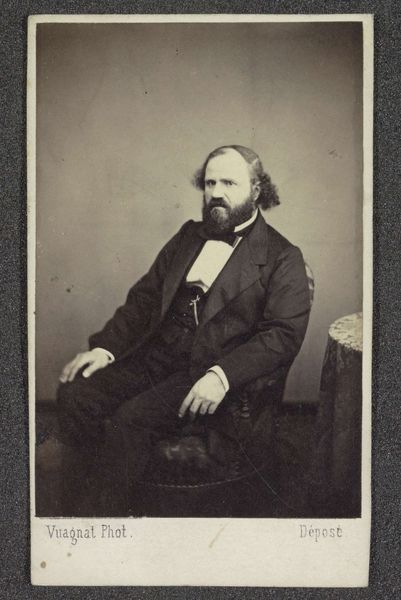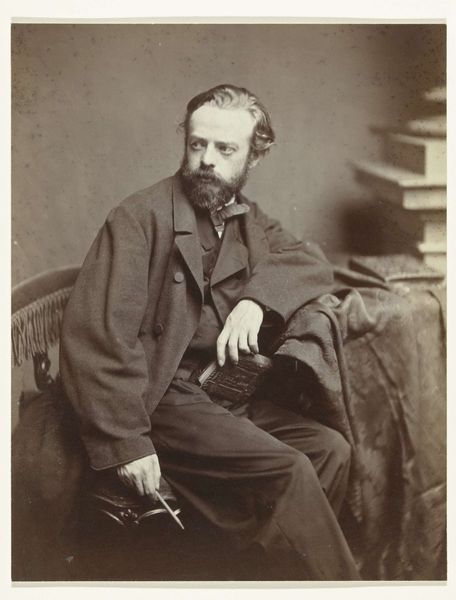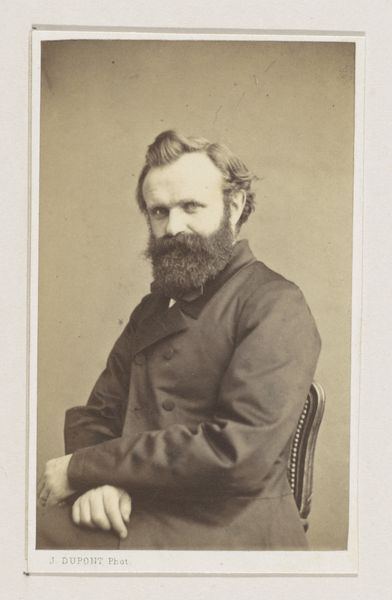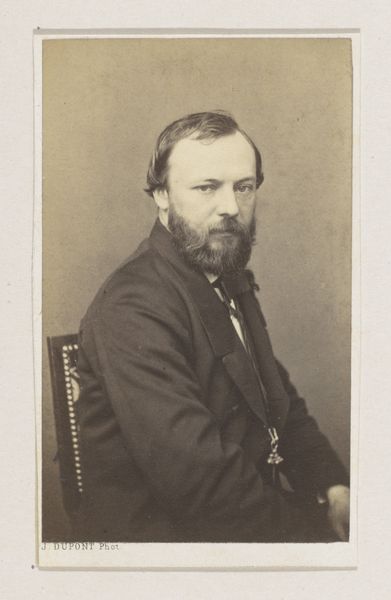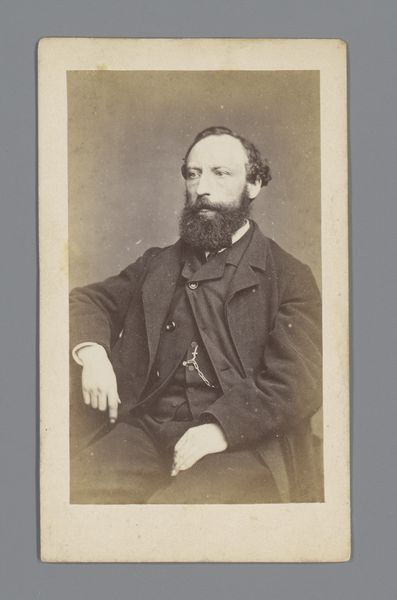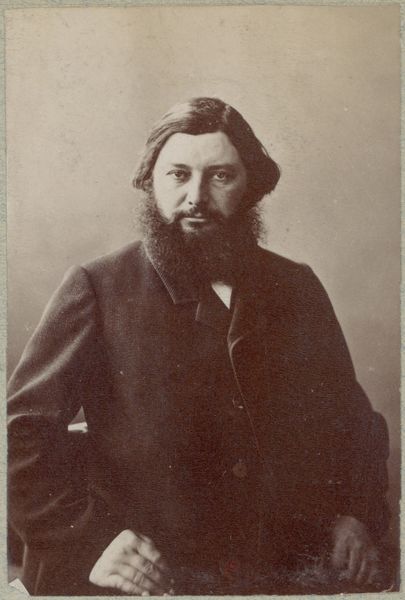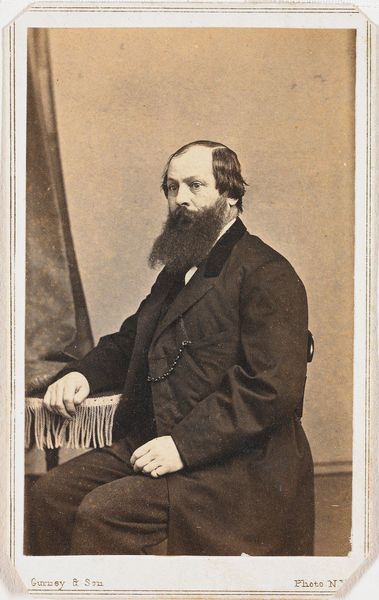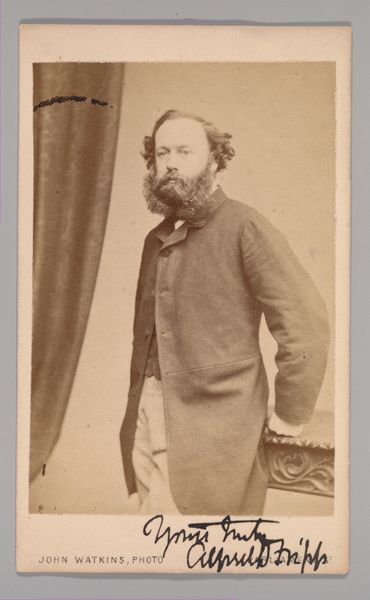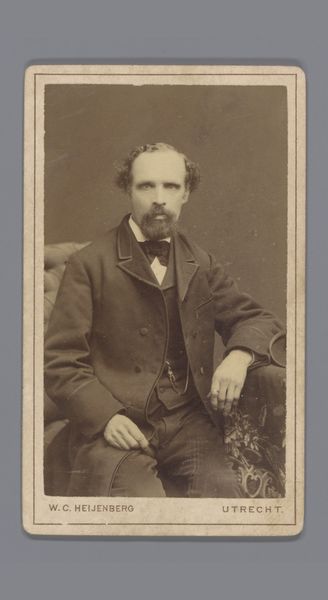
Copyright: Public domain
Curator: Today we are examining a gelatin-silver print made circa 1867 by Felix Nadar, depicting Edouard Manet. Editor: My immediate reaction is one of austere curiosity. The stark tonality, the formal attire contrasting with the tousled hair...it intrigues. Curator: Nadar was instrumental in shaping the cultural status of artists through photography. His studio became a gathering place for avant-garde figures in Paris. Placing Manet within that circle is quite telling. Editor: Absolutely. And considering photography's emerging status as an art form itself, the composition is fascinating. Manet leans casually on the fringed chair, a calculated informality. His gaze isn't directly at the camera, adding a layer of detachment. Curator: Indeed. Manet was a figure of controversy. Nadar, known for photographing figures who pushed societal norms, would have understood and perhaps aimed to subtly champion him. Consider the social weight such a portrait carried. Editor: The lighting as well! The chiaroscuro effect emphasizes Manet’s face, his penetrating gaze. His figure almost merges into the dark background which creates an interesting focus on his head and hands. There’s an undeniable visual drama. Curator: Which makes it difficult to ignore the role portraiture played at that moment. Figures like Nadar influenced the trajectory of how artists perceived themselves and, equally important, how the public perceived them. Manet as the modern painter, now documented through the modern technology of photography. Editor: You're right. Seeing this image helps us decode Manet through this interaction. I notice, on repeat viewing, how this gelatin silver print holds onto romantic notions despite its attempt at stark realism. It's full of fascinating contradictions. Curator: This portrait illuminates more than just Manet's likeness. It highlights the changing role of the artist within a transforming social landscape. Nadar wasn’t simply capturing an image but also actively shaping an artistic legacy. Editor: And the nuances within the gradations of grayscale allows for an intimate moment between artist and camera...which somehow now lets us into that time. Very striking.
Comments
No comments
Be the first to comment and join the conversation on the ultimate creative platform.
